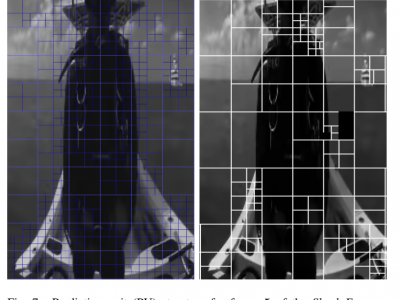Documents
Poster
Discrete Cosine Basis Oriented Motion Modeling for Fisheye and 360 Degree Video Coding

- Citation Author(s):
- Submitted by:
- Manoranjan Paul
- Last updated:
- 18 September 2019 - 5:18am
- Document Type:
- Poster
- Document Year:
- 2019
- Event:
- Presenters:
- Professor Manoranjan Paul
- Paper Code:
- MMSP-P3
- Categories:
- Log in to post comments
Motion modeling plays a central role in video compression. This role is even more critical in fisheye video sequences
since the wide-angle fisheye imagery has special characteristics as in exhibiting radial distortion. While the translational motion model employed by modern video coding standards, such as HEVC, is sufficient in most cases, using higher order models is
beneficial; for this reason, the upcoming video coding standard, VVC, employs a 4-parameter affine model. Discrete cosine basis
has the ability to efficiently model complex motion fields. In this work, we investigate the motion modeling behaviour of
the discrete cosine basis equipped with higher frequency cosine vectors. In particular, the developed discrete cosine basis is used as a single high-order model to describe a fisheye frame’s motion; we employ this motion to produce an extra prediction reference, which is added to the HEVC list of references. Experimental results show an increase in delta bit rate, over conventional HEVC, when higher frequency cosine vectors are added in the motion modeling process. Then leveraging on this modified discrete cosine basis, we propose to employ it for predicting the motion in 360 degree video frames because of their resemblance with fisheye images. In this case, a delta bit rate of 2% is achieved, over conventional HEVC.

